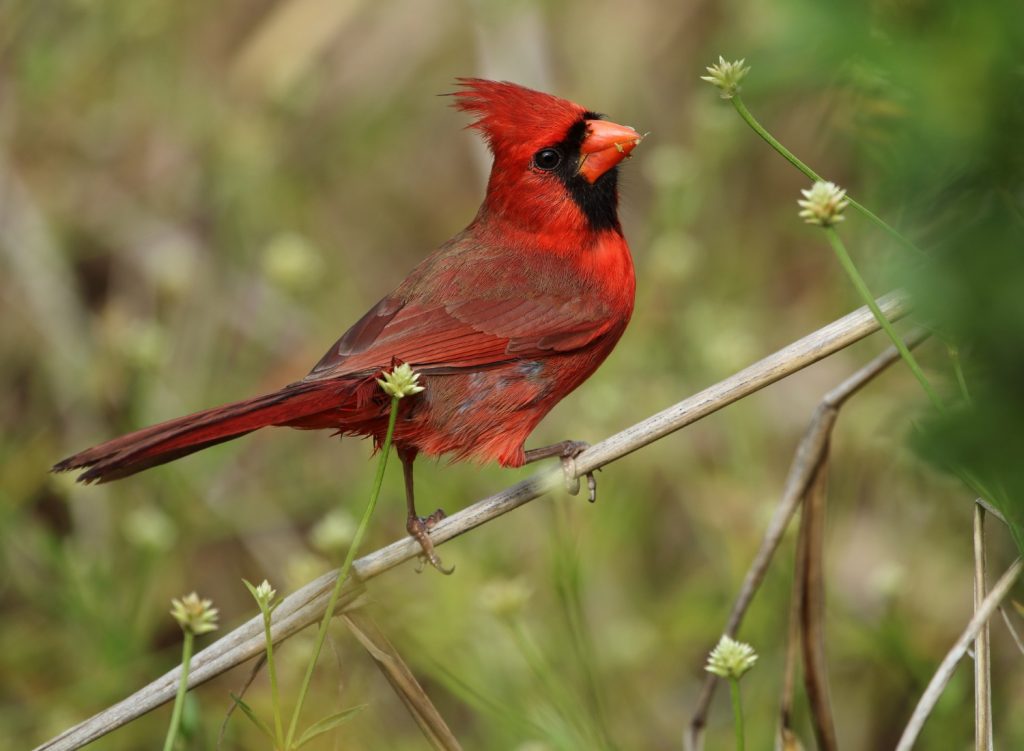Cardinal Bird Feeders: How Are They Different?

In the world of backyard birdwatching, cardinals hold a special place. Their vivid red plumage and soul-soothing melodies make them a sought-after sight for bird enthusiasts. Cardinals are not just any ordinary feathered visitors—they come with their unique set of preferences when it comes to bird feeders. In this blog, we’ll embark on a journey to understand these fascinating birds better and explore the distinct characteristics of cardinal bird feeders.
Before we delve into the specifics, let’s take a moment to appreciate cardinals’ natural beauty and charm. With their scientific name, Cardinalis cardinalis, they are native to North America and grace us with their presence throughout the year. But attracting these exquisite birds to your garden requires some insider knowledge. You’ll need to understand why cardinal bird feeders are unlike their conventional counterparts and how they cater to the specific needs of these crimson-clad avian wonders.
Cardinals: A Brief Introduction
Before delving into the specifics of cardinal bird feeders, let’s take a moment to appreciate these stunning birds. Cardinals, scientifically known as Cardinalis cardinalis, are native to North America. Males feature brilliant red plumage and striking black masks, while females sport a more muted but equally charming combination of brown and red feathers.
Cardinals are year-round residents in many parts of the United States and Canada, making them a common sight in suburban gardens and woodlands. Their distinctive calls and vibrant appearance make them a sought-after species for birdwatchers and backyard enthusiasts alike.
Why Cardinals Require Special Feeders
Cardinals have unique feeding habits and preferences, which require special considerations when it comes to bird feeders. Understanding these needs is crucial for successfully attracting and providing for these beautiful birds.
Platform Feeders
Cardinals prefer feeding on flat, open surfaces rather than a hanging bird feeder or tube feeder. Platform feeders, also known as tray feeders, are ideal for cardinals because they provide ample space for these birds to perch and feed comfortably. These feeders typically consist of a flat tray with a mesh bottom to allow rainwater to drain away, keeping the birdseed dry.
Large Perches
Cardinals are relatively large birds, requiring sturdy and spacious perches to comfortably access the food. Look for feeders with wide perches or perching trays, as this will accommodate their size and allow multiple cardinals to feed simultaneously.
Sunflower Seeds
Cardinals have a particular affinity for sunflower seeds. Black oil sunflower seeds are their favorite choice. These seeds have a high fat content, providing essential energy, especially during the winter when food is scarce. Consider using a cardinal-specific seed blend primarily consisting of black oil sunflower seeds to attract these birds to your feeder.
Safflower Seeds
Safflower seeds are another excellent option for attracting cardinals. Many feeder blends include safflower seeds, and cardinals are known to readily consume them. Additionally, safflower seeds have the advantage of being less attractive to squirrels, which can be a common nuisance at bird feeders.
Easy Accessibility
Cardinals prefer feeders placed in open and visible locations where they can quickly spot potential predators. They are cautious birds—if they feel threatened while feeding, they may avoid the feeder altogether. Placing the feeder near dense shrubbery or trees can provide them with a sense of security while offering easy food access.
Protection from Weather
Cardinals are not only active during the warmer months but also during the winter. Ensure that your cardinal bird feeder offers some protection from the elements, such as a roof or a baffle. This will keep the birdseed dry and make it more appealing to cardinals year-round.
Cleanliness
Like all bird feeders, cardinal feeders need regular cleaning to prevent the growth of mold bacteria and the spread of diseases among the birds. Make it a habit to regularly clean and refill your cardinal feeder, especially during wet weather when mold can become a concern.
Conclusion
In summary, attracting cardinals to your backyard and enjoying their presence requires a specialized approach to bird feeders. Cardinal bird feeders differ from regular feeders, offering flat platforms, large perches, and specific types of birdseed like sunflower and safflower seeds. Providing a safe and accessible feeding environment for cardinals will attract these beautiful birds and help you create a welcoming haven for a variety of feathered visitors in your garden. So, invest in a cardinal bird feeder, stock it with their favorite treats, and get ready to be serenaded by the enchanting songs of these stunning red birds.